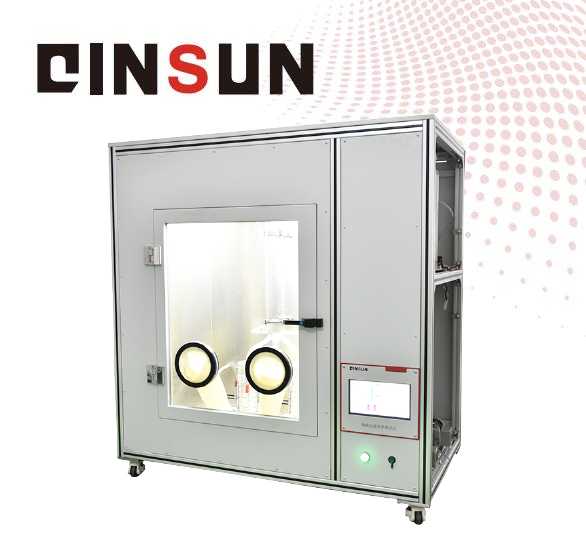Bacterial filtration efficiency tester G299 is suitable for medical surgical masks: it is used to cover the mouth, nose and mandible of the user to prevent microorganisms.
Features:
1. The Bacterial filtration efficiency tester consists of two parts: mechanical and electrical. It includes negative pressure cabinet, gas path and bracket.
1. The Bacterial filtration efficiency tester consists of two parts: mechanical and electrical. It includes negative pressure cabinet, gas path and bracket.
2. Touch screen easy operation with USB interface to support data transfer, calibration can be carried through keyboard and USB interface.

3. Equipped with leakage protection and operating window, providing better operating vision and safe operating conditions.
4. Stainless steel chamber with insulation and flame retardant lining, stable and reliable.

Bacterial filtration efficiency tester test principle:
A certain concentration of bacterial aerosol accurs at upstream of the mask, entering the aerosol chamber and mix, the bacterial aerosol enters into two parallel gas path sampling system. One adds test sample to the sampler and other one does not add samples as positive quality control (total bacterial count). The ratio between the positive quality control value and the sample test value is the filtration efficiency.
A certain concentration of bacterial aerosol accurs at upstream of the mask, entering the aerosol chamber and mix, the bacterial aerosol enters into two parallel gas path sampling system. One adds test sample to the sampler and other one does not add samples as positive quality control (total bacterial count). The ratio between the positive quality control value and the sample test value is the filtration efficiency.
Applicable Standards
- ASTM F2100 standard specification for performance of materials used in medical face masks
- EN 14683 standard that medical face masks in Europe are required to comply with
- ASTM F2101 standard test method for evaluating bacterial filtration efficiency (BFE) of medical mask materials using Staphylococcus aureus biological aerosol
- YY0469-2011 Technical requirements for surgical mask
- YY/T 0969-2013 Single-
use medical face mask
Video Description:
https://youtu.be/i0EM6Zr9hxk
Characteristics of G299 automated filter tester:
1. Intelligent touch screen control panel
more efficient and reliable, programmable 10 inch color LCD touch, achieve control, data display and other functions
2. High precision
Two samplers simultaneously sampling, avoid the test error by intermediate link, improve the accuracy of test
3. Multi directional protection design
Equipped with current overload protection, leakage protection and negative pressure cabinet to ensure safety for operator
4. Stability customized parameters
Adopts imported accessories, features stable movements, accurate test data and good repeatability
Technical Specification:
| Sampling flow:A, B channel 28.3L/min | Test tube:16mm*150mm |
| Time delivery of bacterial suspension to spray: Set range 0-10min, default 1min | Operate/sample time: Rang 0-10min, default 2min |
| Median mass dia of bacterial aerosol generator:Average partical dia(3.0±0.3)μm deviation≤1.5 | Peristaltic pump flow rate : 0.006-3ml/min |
| Glass aerosol chamber: 60cm*8.5cm*3cm(thick) | Cell particle sampler: 6 stage Anderson,I>7μm, II(4.7~7)μm, III(3.3~4.7)μm, IV(2.1~3.3)μm, V(1.1~2.1)μm, VI(0.6~1.1)μm |
| Test tube:16mm*150mm | Aerosol chamber pressure: Negative 90~120Pa |
| Resolution 0.1Pa, error ±2% | Spray flow:8-10L/min |
| Cabinet pressure: Negative 50~200 Pa | Automatically clean time:1min |
| Power:220V 50Hz | Dimension(LxWxH):150cm×80cm×170cm |
Applications of bacterial filtration efficiency tester:
Bacterial filtration efficiency (BFE) testers are performed on filtration materials and equipment designed to prevent biological aerosols, such as masks, surgical gowns, hats and air filters. G299 automated filter tester is suitable for all kinds of masks, meltblown cloth protective clothing / gloves etc.
评论
发表评论